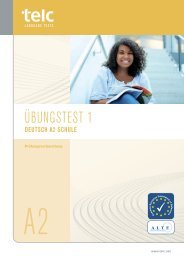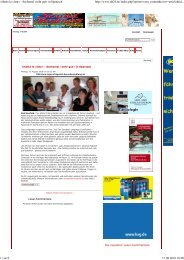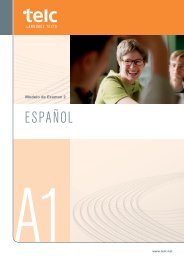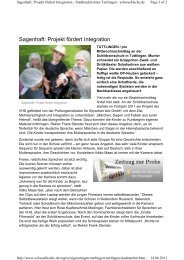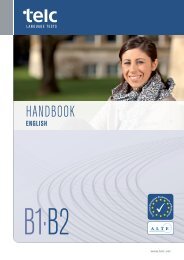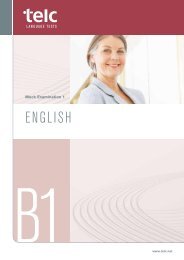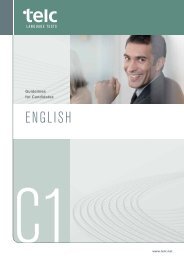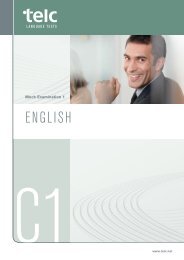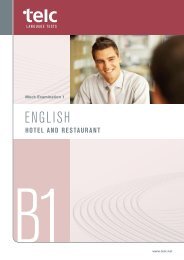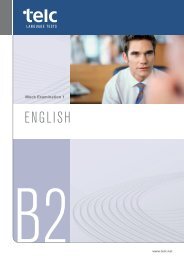Download Handbook (PDF, 4,3 MB) - telc GmbH
Download Handbook (PDF, 4,3 MB) - telc GmbH
Download Handbook (PDF, 4,3 MB) - telc GmbH
Create successful ePaper yourself
Turn your PDF publications into a flip-book with our unique Google optimized e-Paper software.
Background Information<br />
READING<br />
oVERALL READING CoMPREHENSIoN<br />
b1 Can read straightforward factual texts on subjects related to his / her field of interest with a<br />
satisfactory level of comprehension.<br />
A2 Can understand short, simple texts on familiar matters of a concrete type which consist of high<br />
frequency everyday or job-related language.<br />
Can understand short, simple texts containing the highest frequency vocabulary, including a<br />
proportion of shared international vocabulary items.<br />
READING CoRRESPoNDENCE<br />
b1 Can understand the description of events, feelings and wishes in personal letters well enough to<br />
correspond regularly with a pen friend.<br />
A2 Can understand basic types of standard routine letters and faxes (enquiries, orders, letters of<br />
confirmation etc.) on familiar topics.<br />
Can understand short, simple personal letters.<br />
READING FoR oRIENTATIoN<br />
b1 Can scan longer texts in order to locate desired information, and gather information from<br />
different parts of a text, or from different texts in order to fulfil a specific task.<br />
Can find and understand relevant information in everyday material, such as letters, brochures<br />
and short official documents.<br />
A2 Can find specific, predictable information in simple everyday material such as advertisements,<br />
prospectuses, menus, reference lists and timetables.<br />
Can locate specific information in lists and isolate the information required (e. g. use the “Yellow<br />
Pages” to find a service or tradesman).<br />
Can understand everyday signs and notices: in public places, such as streets, restaurants,<br />
railway stations; in workplaces, such as directions, instructions, hazard warnings.<br />
READING FoR INFoRMATIoN AND ARGUMENT<br />
b1 Can identify the main conclusions in clearly signalled argumentative texts.<br />
Can recognise the line of argument in the treatment of the issue presented, though not<br />
necessarily in detail.<br />
Can recognise significant points in straightforward newspaper articles on familiar subjects.<br />
A2 Can identify specific information in simpler written material he / she encounters such as letters,<br />
brochures and short newspaper articles describing events.<br />
<strong>Handbook</strong> <strong>telc</strong> English A2·B1<br />
15



